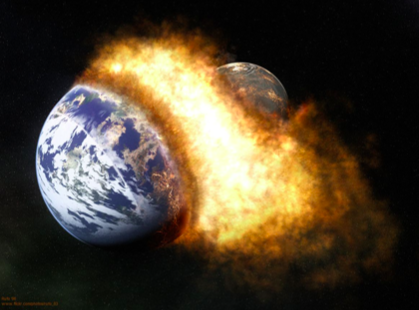
4.5 billion years ago, a planetary body collided with Earth and broke apart to form protoplanet Theia. According to National Geographic, the collision sent large amounts of material orbiting around the Earth, and this material eventually formed the moon.
A new study shows that Theia might have left two chunks of material in Earth’s mantle. While scientists have already known this dense material has existed, specifically at the base of the mantle near the boundary with the core, one under South Africa and another under the Pacific Ocean, they have only theorized how they came to be.
One theory explains how at the beginning of Earth’s formation, hot magma separated into a top layer and a bottom layer, which cooled and solidified slower than the top, leaving more time for varying levels of density to form.
However, using computer simulations and lunar samples from the Apollo missions, researchers have theorized this new idea.
Some of these computer simulations, such as Honping Deng’s model, which reveals finer details than other simulations, show that Theia and Earth’s material didn’t mix very well. Others, though, show that the material did mix well, leading scientists to believe that they underestimated the amount of mixing that has occurred.
Understanding the degree of mixing that occurred is necessary to analyze the geological samples from both the moon, whose material is mainly from Theia, and the Earth. Additionally, the question of how long these two dense regions have existed still stands.
“It would be really cool if they could figure that out,” one student expresses. “I am in full support of those types of projects. Do we really need to know what happened? No… but it helps us learn about Earth’s past. The [research] process also helps develop new technologies.”







